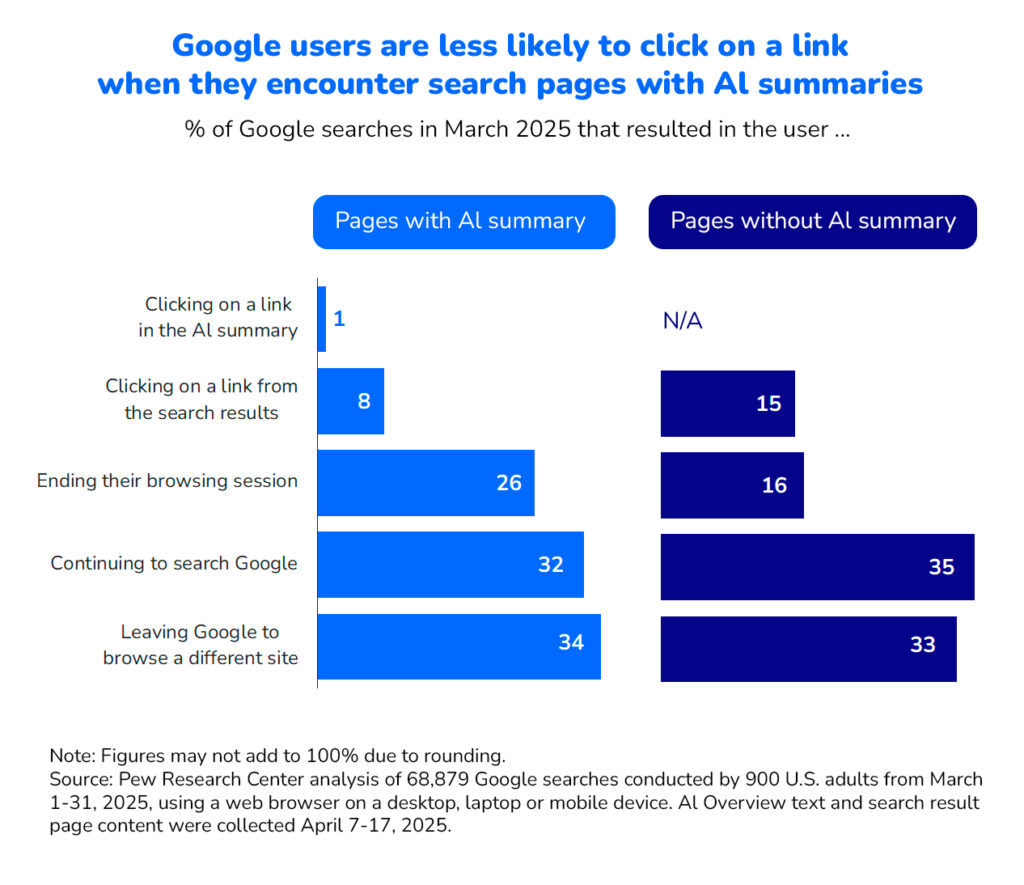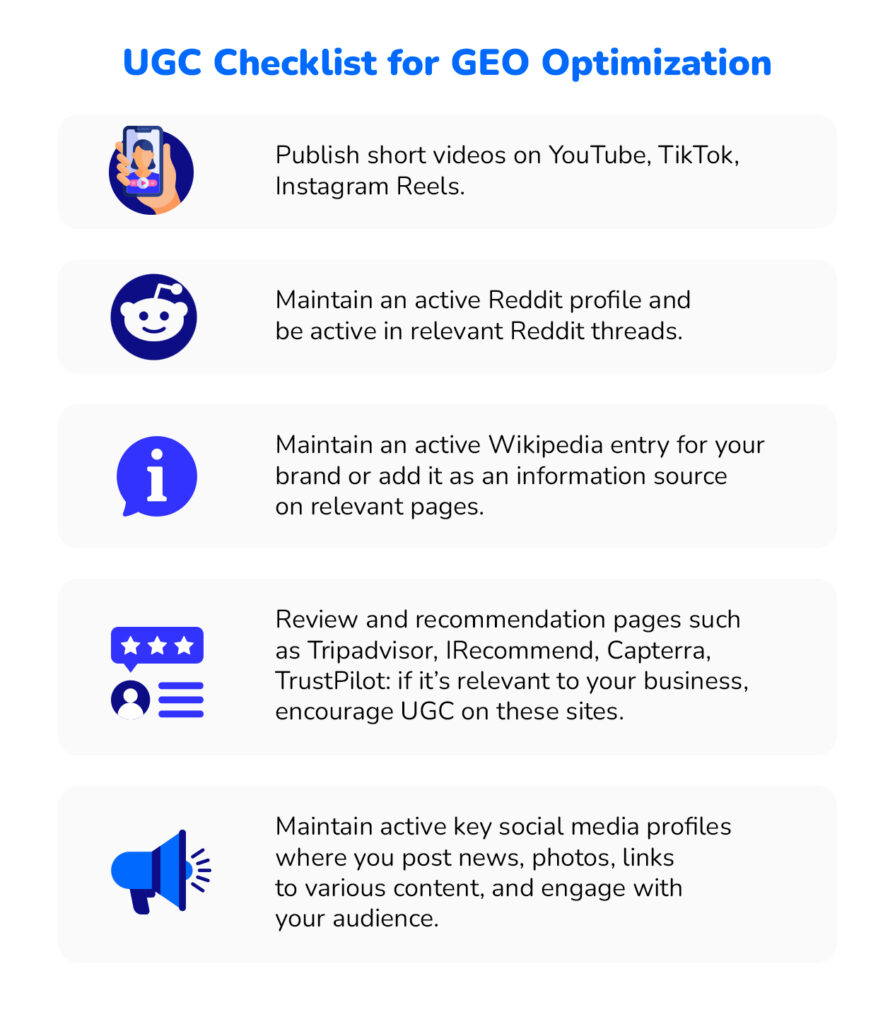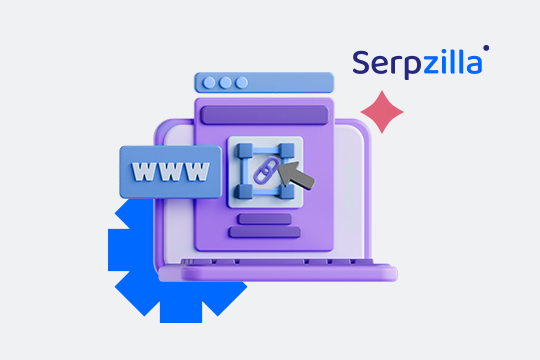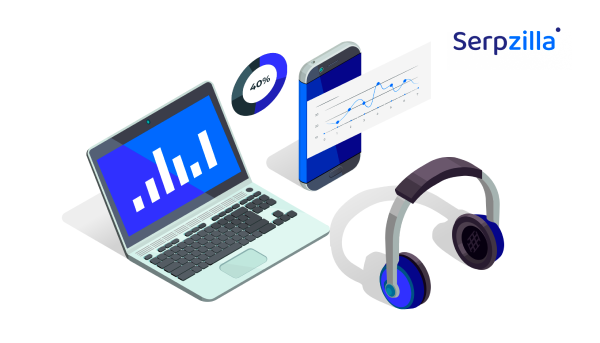AI is actively integrating into multiple aspects of human life and work. It is no wonder that the way we look up information on the Internet is also heavily affected. AI-powered search experiences such as Google’s AI Overviews, Bing Copilot, and independent platforms like Perplexity have been gaining traction recently.
However, the widespread use of AI-powered search features has brought about a serious shift in user behavior: in 2025, according to Wordstream, almost 65% of all searches were zero-click, meaning that users find what they need in AI features such as AI Overviews or Featured Snippets. When this happens, they don’t follow a link on SERP, which means less organic traffic for sites.

This has given rise to a whole new branch of search engine optimization called GEO (or generative engine optimization). While traditional searches may end up zero-click, it doesn’t mean that SEO as it was isn’t working anymore. You can still gain a lot of visibility by optimizing for various AI.
In 2025, GEO has moved from a nice-to-have perk to a necessity. In this article, we’ll dive into the specifics of a successful GEO strategy.
How AI Overviews and Generative SERPs Work
Traditional SEO focuses on ranking in the “blue links”. At the same time, GEO ensures your content is visible in AI-generated answers or is cited when searchers use AI search tools such as Perplexity.
For example, Google AI Overviews appear for 30–40% of search queries in certain niches (health, finance, travel, eCommerce). These AI answers often summarize multiple sources, so if you’re not cited there, you risk losing visibility, even if you still rank on page one.
AI Overviews are generated by Google’s Large Language Models (LLMs), which combine data from multiple high-authority pages. Instead of showing only ranked links, the AI crafts a summarized answer with citations.
Generative SERPs (search engine results pages powered by AI) may also integrate product carousels, related questions, and visual elements, all without the user having to click away.
Official Google statement:
Google says AI Overviews are designed to “help people quickly understand a topic and explore the web more deeply.” Content that’s clear, authoritative, and structured is more likely to be cited.
Example:
Here’s an AI overview for “best hiking shoes for winter” → Google’s AI Overview cites 3–5 brands with descriptions, pulling snippets from blog posts and product guides.
And here’s a Perplexity answer for “How to Rank for AI Overviews”. It offers 10 sources, of which we can see a Google official page, two highly reputable SEO blogs, and a Reddit thread in the top four.
So, the question is, how do you get to be one of the sources listed in an answer to a query related to your website, product, or services? Read the following tips for your GEO strategy.
GEO Tips to Boost AI Search Visibility
1. Use Conversational, Natural Language
Why it works: AI models are trained on billions of conversational patterns, so answers phrased in a natural, human-like tone are easier for them to quote directly.
Example: Instead of writing “The Mediterranean diet emphasizes vegetables, legumes, and whole grains”, use “What are Mediterranean diet staples? This type of diet usually includes plenty of colorful veggies, hearty beans, and a variety of whole grains on your plate.”
Framing this information like a question and an answer helps AI to attribute it to a related query like “common Mediterranean diet foods” or “Mediterranean diet base”, and uses it as a direct answer. Using conversational, simple synonyms like vegetables → veggies, legumes → beans also makes your text more like an actual human would talk.
2. Build an Authoritative Blog Presence On and Off Your Site
Why it works: AI features often pull citations from established blogs run by recognized experts or brands. When you consistently publish high-quality, branded content, it signals authority to search engines. Adding guest posting on reputable sites to the mix expands your reach, creates content clusters (which is also a great authority and trust signal), and increases the pool of potential citations.
Example: For the query “Best routes for a 1-day trip in Montenegro”, Perplexity offers 16 sources. Three of the top four are blogs, two of which accept guest posts.
💡 TOOLS: Serpzilla is one of the most effective platforms for finding premium guest posting opportunities. Its vetted site database, topical matching, and AI-assisted filtering help you secure placements on relevant, authoritative domains. This tactic can give you a boost for traditional SEO rankings and helps your chances of being cited in AI Overviews.
3. Include Multiple Query Variations on One Page
Why it works: AI Overviews often blend answers from different but related search queries. Covering multiple phrasings increases your surface area for citation. You can use a lot of synonyms as long as you make sure that your text flows as natural speech.
Example: A page targeting “best budget smartphones” could also include sections answering “affordable phones with good cameras”, “cheap Android phones in 2025”, and “smartphones under $300”.
As you can see in the AI Overview for this query below, there are plenty of potential keywords that relate to “cheap phones” semantically or logically.
4. Provide Unique Insights or POVs
Why it works: AI-generated answers often repeat advice that is very mainstream. Algorithms like Google’s Muvera treat these repetitions as confirmation by spotting a statement and then finding paraphrases or similar ideas that serve as a back-up. Unique but authoritative POVs or fresh takes can make your content stand out as “value-added” material worth citing.
Example: In a “best morning routine” AI Overview, most sources list meditation, mindfulness practices, and exercise. However, there’s also a finance blog on “billionaire morning routine”, food sites that emphasize the importance of healthy eating for overall well-being, and even an esoteric site that advises you to cultivate gratitude as a daily morning exercise.
5. Update Frequently Around Trending Queries
Why it works: AI search features lean heavily towards recent content for fast-changing topics. Regular updates keep your content in the “fresh” pool.
Example: A “top 10 AI writing tools” article can be updated monthly with new releases and pricing changes, signaling freshness to Google’s systems.
For instance, out of nine listed sources for this query on Perplexity, eight were published or refreshed less than two months ago, and three out of the top four are just a few weeks old.
6. Use “Bridging” Sections Between Topics
Why it works: AI SERPs often combine information from multiple related subtopics. Content that connects these naturally can appear for more complex, multi-intent queries.
Example: An article on “sustainable travel” could have a bridging section linking eco-friendly accommodation with low-carbon transportation, increasing your chances of being cited for a combined “green travel planning” AI answer. In AI Overviews for this query, every single piece of content at the top follows this strategy and touches upon multiple aspects of sustainability, from economics to carbon footprints.
Moreover, out of the top six sources, four are generic websites that don’t even operate in the sustainability niche.
7. Develop Social Networks and Presence on UGC Sites
Why it works: AI Overviews often integrate data from YouTube, Reddit, Quora, Wikipedia, and other user-generated content sources. We don’t even have to go far for examples – for each query we looked at in the above tips, you will find YouTube, Reddit, Tripadvisor, and other UGC sites or social networks among the top sources.

How to Track & Measure GEO Performance
Since GEO is a relatively new field of SEO, many SEO tools are starting to introduce AI tracking features, such as Semrush AI SEO toolkit or Ahrefs Brand Radar tool. And yet, some tracking is still done manually because AI tracking tools are still evolving and there aren’t yet many established or specific metrics. Studies show mixed results on click-through volume and referral tracking due to the evolving nature of AI-enhanced search experiences.
Let’s take a closer look at how you can evaluate your GEO efforts.
- Visual checks: Search for your target queries in Incognito or logged-out mode and look for your brand/domain in the citations.
You can rely on metrics like Ahrefs AI Share of Voice, Web Visibility, AI-driven brand mentions, Semrush Presence Rate. For instance, Semrush tracks if your website is included in the list of sources used for the AI Overview. If it is, the Position Tracking tool will mark it as ranking for this SERP feature.
Semrush Position Tracking
Ahrefs Brand Radar
- Analyze the sentiment of brand mentions: This will help you to understand AI’s perception of your brand’s authority. What is the context in which your brand is cited in AI search features? Is it mentioned as a good example? Do you often feature in “best of” lists?
- Analyze user engagement following AI referrals: Users who click on your links from AI SERPs can be distinguished. However, it may not always be as straightforward as with traditional organic traffic because AI Overviews and generative search features don’t always pass clean or consistent referral data.
Some AI tools do send identifiable referrers in the HTTP header.
| Examples: Perplexity.ai – usually sends referrer: perplexity.ai or a URL like https://www.perplexity.ai/search/… You.com – sends you.com ChatGPT Search (Bing integration) sometimes passes through bing.com but with distinctive URL patterns |
Google Analytics or Matomo, you can filter by “Source” or “Referrer” to see these domains.
4. Use UTM parameters on key links: If you share your content proactively on platforms likely to be crawled or linked from AI tools (YouTube descriptions, Reddit posts, guest posts), you can add UTM tags like ?utm_source=perplexity&utm_medium=referral to detect AI-driven traffic that’s clicking through these sources.
5. Segment “Dark Traffic” Patterns: AI Overview clicks from Google often show up as google / organic, but may have:
- Shorter average session durations (user already got most info in AI answer)
- Higher bounce rates
- A spike in impressions for certain queries in GSC but no corresponding increase in organic clicks, usually meaning users saw your brand in the AI Overview without clicking.
Comparing GSC “Impressions” vs. GA “Sessions” for the same query set can hint at AI Overview exposure.
GEO Strategy Checklist for 2025
- Content answers that clearly match search intent from the first paragraph
- Content that actively uses structured blocks (Q&A, lists, tables)
- Has schema markup (FAQ Page, HowTo, Product)
- Shows expertise (author bio, brand authority, case studies)
- Gains external mentions and backlinks from reputable sources
- Content is analyzed and tested against competitor AI Overview snippets for structure & tone
- Visibility and citations are tracked regularly with tools and manual checks
FAQ
1. How is GEO different from traditional SEO?
GEO focuses on optimizing for AI-generated answers, while traditional SEO targets ranking in organic listings. In GEO, citation and content structure are as important as keyword targeting.
2. How do I know if my content appears in AI Overviews?
You can check your target queries manually and look for citations in AI Overviews. Tools like Semrush AI SEO Toolkit, Ahrefs Brand Radar tool, SERP API, and peec.ai can automate detection and analyze your AI Share of Voice and Web Visibility.
3. Is link building still important for GEO?
Yes, it is. Backlinks remain a strong trust and authority signal, and this signal helps search engine AIs to determine whether your content is citation-worthy.
4. How can I structure my content for generative search?
Use headings that match the query, provide concise answers in the first paragraph, match your content to search intent precisely, and break content into clear, schema-enhanced sections.
5. Will AI Overviews replace traditional search results?
Not entirely, at least for now. But for many queries, especially YMYL topics, they will dominate above-the-fold space, making GEO critical for visibility.
6. What types of content perform best in AI Overviews?
How-to guides, product comparisons, lists, Q&A sections, authoritative blog posts, and user-generated content. Original research tends to be cited most frequently.









